Sunbeam snakes are a beautiful species loved for their iridescent black or dark brown scales. When the sunlight hits them you will be dazzled by the rainbows that dance across their skin.
These beautiful snakes are tempting to anyone looking for a pet snake. But, sunbeams are not for beginners. They have a high mortality rate and strict habitat and husbandry needs.
They are best suited to an experienced keeper who is willing to put in the effort to set up a suitable enclosure.
In this article, we cover general information about sunbeam snakes and where you can buy them. We then share husbandry tips and the best cage setup.
Sunbeam Snake Species Guide
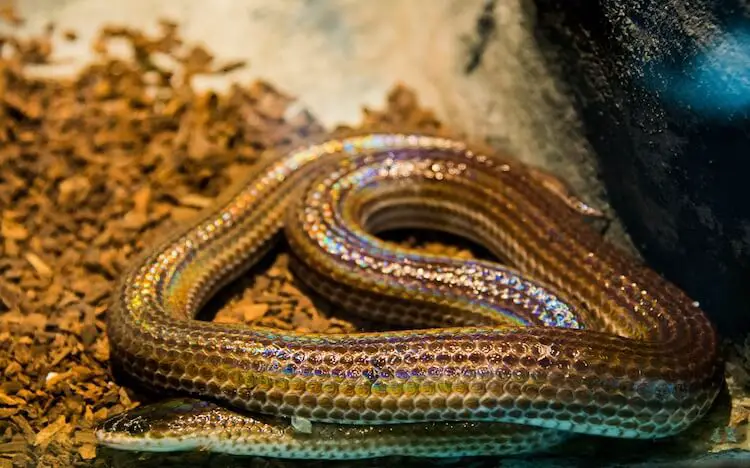
Common sunbeam snakes (Xenopeltis unicolor) belong to the family Xenopeltidae. They are one of just two species in the Xenopeltidae family, the other being the Hainan sunbeam snake (Xenopeltis hainanensis). Both of these species are constrictors from Asia.
In this article we will focus on the common sunbeam snake as it is more commonly kept as a pet.
Sunbeam snakes are a primitive species, which means they have not changed or evolved much from their ancestors, the Macrostomata. They look very similar to the Mexican burrowing python.
This species is native to southeast Asia, India, and parts of Indonesia. They prefer a very moist climate with lower temperatures. They thrive in 75% to 100% humidity and an ambient temperature of about 80 degrees Fahrenheit. This is one of their husbandry needs that makes their care difficult.
With the correct research, they are not actually that hard to care for. They just have very specific housing requirements. They also need a keeper who understands that this species cannot be handled as frequently as you would a corn snake.
The most important aspect of setting up their enclosure is remembering that they like to spend a lot of time underground. This means it is vital to have a loose, soil-like substrate that they can burrow into. Because they prefer to spend more time underground, having a tall enclosure is not necessary.
Despite how hard it may sound to care for these snakes, all it takes is some dedication.
Sunbeam snakes are known for having a very docile temperament, even more so than ball pythons. If you are willing to put in the time and effort, they can be a very rewarding species to keep.
What We Like
Pros
- Beautiful black and brown coloring with iridescent scales.
- Keeping one will make your collection unique as they are very rare.
- Relatively cheap and very easy to find for sale.
Cons
- Require a very high humidity level and have many strict husbandry needs.
- Most are wild caught, which means they are more likely to have parasites.
- Have a high mortality rate in captivity due to stress.
Burrowing Behavior
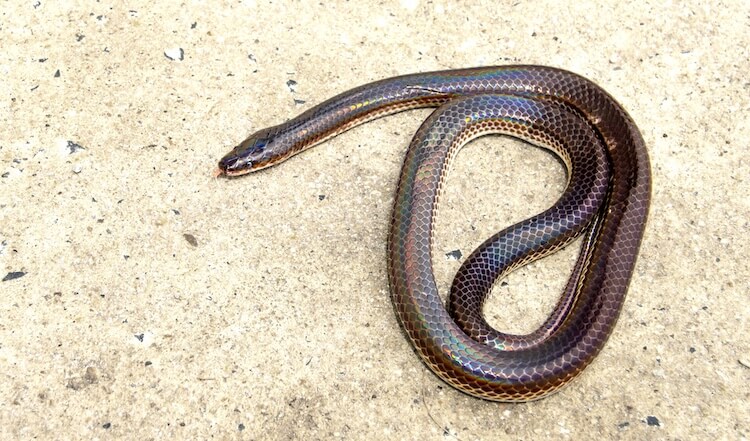
Sunbeam snakes are very shy, both in the wild and in captivity. They spend most of their time underground, and are nocturnal, both of which help them avoid predators or other threats. This burrowing behavior is also seen in the Kenyan Sand Boa
Your sunbeam will probably spend the majority of its time hiding too.
Sunbeam snakes are one of a few burrowing species, so they are very different to look at. They have a wedge-shaped head made for scooping away dirt. If you have the chance to watch them dig a burrow, it is fascinating.
They are easily stressed out, which is dangerous for their health.
When they are angry, stressed, or afraid, they may rattle their tail to mimic a rattlesnake. This does not produce a buzzing noise, but the motion alone is usually enough to stop predators from bothering them. Another defense mechanism they use is releasing a foul-smelling liquid from their vent. This is known as musking and is common in baby copperheads too.
As pets they should not be handled often. While they can eventually grow accustomed to being held, there is still a high risk that they will become stressed and die. Sunbeam snakes are also capable of releasing a foul-smelling musk, so you will likely notice a nasty odor whenever you do handle one.
If you decide to handle one and they begin to show signs of being stressed (e.g. hissing, rattling the tail or striking), you should place them back in the enclosure.
Appearance and Colors
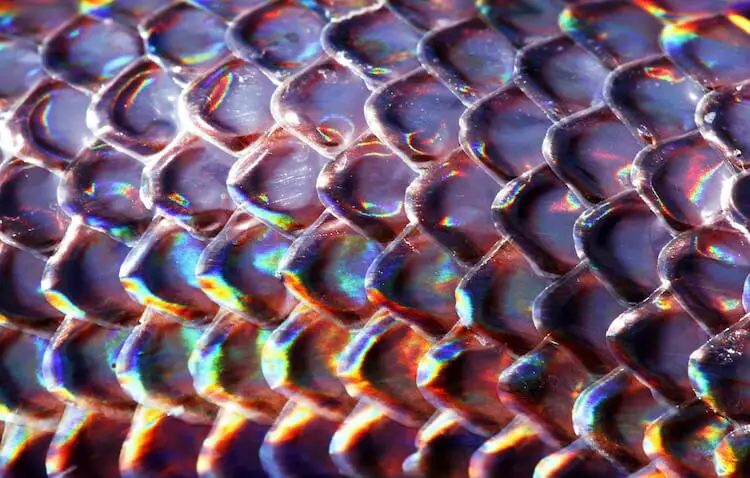
Sunbeam snakes are very unique in appearance. Their bodies are slightly flattened with a wedge-shaped head that aids them in digging. Their heads are about the same width as their bodies, so it is not always obvious where their head begins.
There are two species of sunbeam snakes (common and Hainan) but there is no difference in appearance between them.
Sunbeam snakes have iridescent dark brown or black scales on the upper half of their body, with a white, pale yellow, or cream-colored belly. They are sometimes called iridescent earth snakes due to this.
Younger species often have a white ring around their neck, but this fades after their first year.
Since they are burrowing species (i.e. semi-fossorial) they have small eyes and a body made for moving about in burrows underground.
They usually reach two to three feet in length, although there have been reports of individuals up to about four feet. Juveniles are usually around two feet. There is no noticeable difference between males and females in size.
Male and female species also look the same.
The only definitive way to distinguish between the sexes is by probing. Probing is when a professional takes a small metal instrument and inserts it into the snake’s vent to detect the presence of hemipenes, a male snake’s sexual organs.
Sunbeam Snake Care Sheet
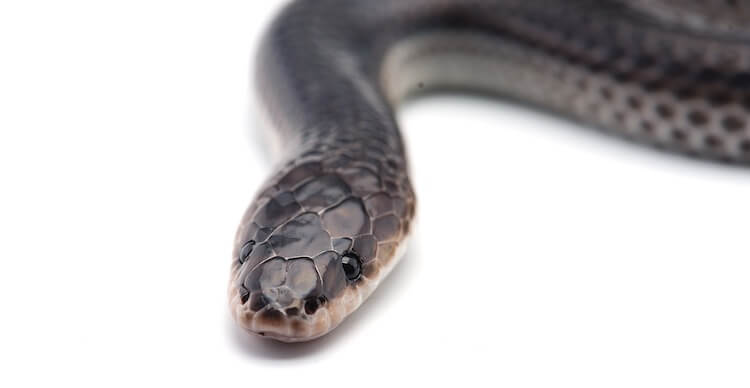
Sunbeam snakes can be quite different in care when compared to more popular snakes. This is not a species for new keepers, or for people who want a snake that they can frequently handle.
They are best suited to experienced hobbyists who want to add a unique species to their collection. Hobbyists must also be willing to put in the time and effort required to properly care for these snakes.
Enclosure Setup
Sunbeam snakes require a humidity level of 75% or higher. Because of this, many people who keep these snakes decide to house them in plastic tubs. A 32-quart plastic tub is the best choice.
Avoid using glass aquariums as it may make your snake feel more exposed. It will also be much more difficult to maintain the high humidity levels.
Once you have picked an enclosure it is time to start thinking about a substrate.
The best substrate will be something loose and soil-like, such as coconut coir. This will allow your snake to burrow as much as it wants to. You will want to use a layer about six inches deep. Be sure to avoid any substrates that are made from pine or cedar, as these types of substrate contain oils that can be toxic to snakes.
After you pick your substrate, you should think about what type of heating to use.
An under-tank heater like a heating mat is ideal for sunbeam snakes. It will keep the enclosure warm without drying out the air as quickly as an overhead heating lamp.
The hot spot of the enclosure should stay around 85 degrees, with an ambient temperature around 80 degrees. The cool side of the enclosure should measure 70 to 75 degrees.
Sunbeam snakes usually stay below ground, so providing a lot of décor is not necessary, but some additional hides or soft plastic plants may help them feel more secure when they leave their burrow. This also means they do not require UVB, as they are not usually exposed to much sunlight in the wild.
You will likely want to invest in:
- A reptile mister or fogger to maintain high humidity.
- A hygrometer to measure humidity.
- Two thermometers: one for the hot side and one for the cool side.
- A water dish large enough for your sunbeam snake to soak in.
The biggest things to remember are that they need high humidity levels, access to a water dish large enough to soak in, and a deep layer of substrate.
Feeding
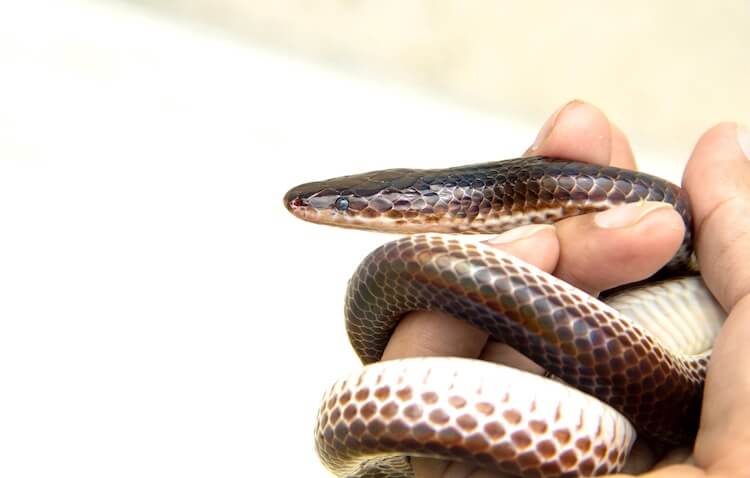
Sunbeam snakes are carnivores that eat a variety of species, including: frogs, lizards, other snakes, small mammals, and small birds.
Like many species, this snake usually prefer to hunt at night. They will emerge from their burrows and seek out prey, which they kill through constriction. They use their powerful muscles to coil around their prey and squeeze it.
Many keepers think that since sunbeam snakes in the wild have such a varied diet, that this must be replicated in captivity. While this snake will definitely eat a frog or lizard if offered one, they will remain perfectly healthy on a rodent diet. They generally have a very strong feeding response.
Frozen or thawed rodents are a much better, and usually cheaper option. Live prey pose a risk to your snake.
Sunbeam snakes in the wild usually feed once a week:
- Baby sunbeam snakes should be fed a pinky mouse every five days.
- Juveniles can be fed a fuzzy mouse every week.
- Adults can be fed a hopper mouse every two weeks.
| Life Stage | Prey | Feeding Frequency |
|---|---|---|
| Hatchling | Pinky mice | Every 5 to 7 days |
| Juvenile | Fuzzy mice | Weekly |
| Adult | Hopper mice | Every 2 weeks |
Feeding small prey is important for this species. Even fully-grown, they usually only have a diameter about the size of a quarter. Stick to prey that is no larger than the width of your snake.
Health Issues
Sunbeam snakes can have a lifespan of about 10 years in captivity, but it is hard to get a good estimate as many of them are imported, and so they are difficult to age.
This species is prone to many of the same illnesses and diseases you may already be aware of if you have kept a snake, but there are a few things you should keep an eye out for.
The first is watching for parasites. Most sunbeam snakes are wild-caught due to the difficulty of breeding them. Due to this they are much more likely to have some form of parasite. If your snake is thin, and losing weight, it likely has some type of intestinal parasite that will need medication.
They are also prone to getting snake mites and ticks, so check carefully under the scales of your snake for either of these parasites.
Another thing to be on the lookout for is scale rot.
Scale rot is a bacterial disease that can cause blisters or open sores along your snake’s body. Discolored scales or scales that appear to be rotting are common signs.
Finally, one of the biggest things to watch for are signs that your snake is becoming too stressed. Stress is one of the biggest causes of mortality in sunbeam snakes.
These animals are used to living their lives underground; they are not used to being seen and handled. Improper housing and handling too frequently, can cause your snake to become constantly fearful. An overly stressed sunbeam snake may stop eating and drinking.
The best way to avoid this is to be sure your snake has enough substrate to burrow in and make sure their enclosure is in a quiet room.
Finding And Picking A Sunbeam Snake
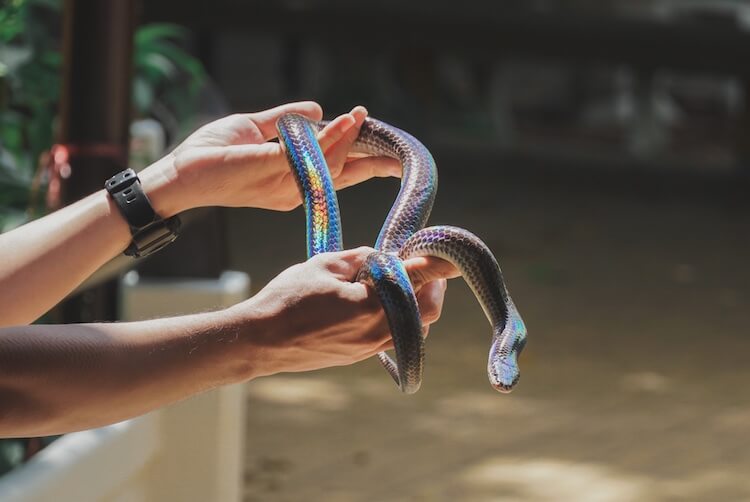
Sunbeam snakes will usually only be sold through specialty reptile shops or breeders. They are notoriously difficult to breed in captivity due to their high levels of stress. Most individuals you find for sale will be wild caught.
You will want to look for a snake that has bright scales, bright eyes, is alert and has a strong feeding response.
Avoid babies that are lethargic, underweight, or have a poor appetite.
Sunbeam snakes for sale will usually cost between $70 and $100.
For a good enclosure, you will ideally want at least a 32-quart plastic tub. Budget $200 to $350 for the full enclosure setup (this includes a heating mat and mister).
Facts
| Species Facts | |
|---|---|
| Common Name | Sunbeam snake, iridescent earth snake, common sunbeam snake. |
| Scientific Name | Xenopeltis unicolor |
| Family Name | Xenopeltidae |
| Price | $70 to $100 |
| Size | 2 – 3 feet long |
| Lifespan | ~10 years |
| Diet | Rodents |
| Tank Size | 32-quart plastic tub |
| Humidity & Temperature | Temperature: 80 – 80°F Humidity: 75 – 100% |
| Popular Alternatives | White-lipped python and Brazilian rainbow boa. |
Summary
Sunbeam snakes have beautiful brown or black iridescent scales that gleam a beautiful rainbow pattern in the sunlight. There are very few other pet species that are as unique and beautiful. Not many people choose to keep them, so adding one to your collection is a sure way to make it more unique.
This species is different from many other pet snakes as they live most of their lives underground. But, this burrowing behavior comes with special husbandry needs.
They thrive in a warm, humid environment and need plenty of loose substrate to burrow into. They also need a mister to maintain the 75% or higher humidity they require.
Sunbeam snakes are not a beginner species. They are very prone to stress, so they should be kept in a dark, quiet room and must not be handled. With the proper amount of research and dedication, they are not as difficult to care for as they may sound.
Does this sound like a challenge you are prepared for? Tell us in the comments.

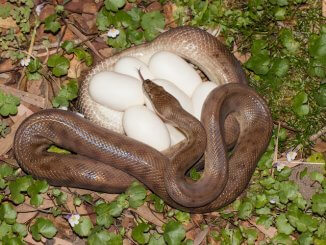
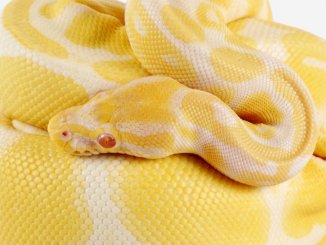
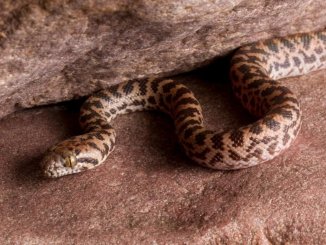
Hello! I love this article I keep sunbeams myself! I am looking into sexing mine so I had one of them probed, the probe went 5 scales down is this correct to assume that snake is a he?
I just want to check they follow the standard sexing ‘rules’ as it is difficult to find information regarding sexing them as people don’t often bother!